
Carbon County is a county located in the U.S. state of Montana. As of the 2020 census, the population was 10,473. Its county seat is Red Lodge.
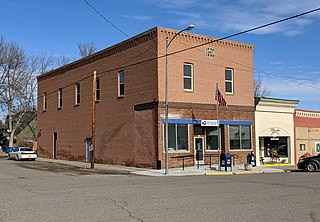
Fromberg is a town in Carbon County, Montana, United States. As of the 2020 census, the population of the town was 392.

Roslyn is a city in Kittitas County, Washington, United States. The population was 893 at the 2010 census. Roslyn is located in the Cascade Mountains, about 80 miles east of Seattle. The town was founded in 1886 as a coal mining company town. During the 20th century, the town gradually transitioned away from coal, and today its economy is primarily based on forestry and tourism. The town was the filming location for The Runner Stumbles, Northern Exposure, and The Man in the High Castle. Many of the town's historical structures have been preserved, and its downtown was added to the National Register of Historic Places in 1978.
Westphalia is a small unincorporated community in Falls County, Texas, United States, located 35 mi (56 km) south of Waco on State Highway 320. Westphalia has a strong German and Catholic background. The Church of the Visitation was, until recently, the largest wooden church west of the Mississippi River. Westphalia is mainly noted for its historic church and convents, but also for its meat market and for its annual church picnic, which is one of the largest in the area. Westphalia is also known for the Westphalia Waltz.

Dawson is a ghost town in Colfax County, New Mexico, United States. Dawson is located approximately 17 miles northeast of Cimarron, and was the site of two separate coal mining disasters in 1913 and 1923. In 1950, the mines were closed , and by 1954 the last residents had left and the post office closed.
Samuel Wilford Gebo (1862–1940) was an American entrepreneur influential in the early development of the U.S. state of Montana. Born in Canada in 1862, Gebo grew up near Ogdensburg, New York, and lived briefly in Minnesota before settling in Montana in the early 1890s.
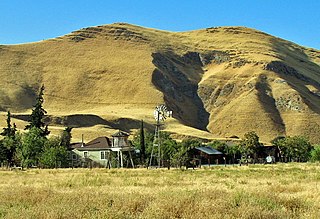
The Black Diamond Mines Regional Preserve is a 6,000-acre (2,400 ha) park located north of Mount Diablo in Contra Costa County, California under the administration of the East Bay Regional Park District (EBRPD). The district acquired the property in 1973. The preserve contains relics of 3 mining towns, former coal and sand mines, and offers guided tours of a former sand mine. The 60 miles (97 km) of trails in the Preserve cross rolling foothill terrain covered with grassland, California oak woodland, California mixed evergreen forest, and chaparral.

Gebo is a ghost town located in Hot Springs County in the U.S. state of Wyoming. It is located approximately 11 miles (18 km) north of Thermopolis.

The IOOF Hall and Fromberg Co-operative Mercantile Building was built in 1906 at the west end of downtown Fromberg, Montana. It was the first brick building in Fromberg and served historically as a department store and as a meeting hall. It was listed on the National Register of Historic Places in 1993.
St. Boniface Cemetery, Wrought-Iron Cross Site is a 3.1-acre (1.3 ha) cemetery in Benson County, North Dakota, United States, several miles to the East-North East of Selz that was listed on the National Register of Historic Places in 1989. It was associated with the later demolished St. Boniface Catholic church which was located on the opposite side of the road – thus in Pierce County – and active from 1905 through 1930. It mainly served a population of Germans from Russia.
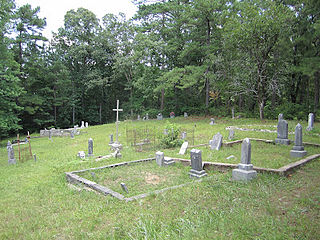
The Blocton Italian Catholic Cemetery is a historic cemetery in West Blocton, Bibb County, Alabama. It was established in 1896 by an Italian Catholic population, immigrants who worked in the coal mines that were once numerous in the county. The cemetery is located in what was originally Blocton, a coal mining company town owned by the Tennessee Coal, Iron and Railroad Company. It was consecrated in 1901 by Edward Patrick Allen, the Roman Catholic Bishop of Mobile. It continued in use until the 1960s, with the most active use occurring during the 1910s and 1920s. The cemetery contains approximately 86 funerary monuments. It was added to the National Register of Historic Places on April 22, 1999.

Clermont Cemetery is a heritage-listed cemetery at Cemetery Road, Clermont, Isaac Region, Queensland, Australia. It was established in 1866. It was added to the Queensland Heritage Register on 6 August 2010.

Collinsville Cemetery is a heritage-listed cemetery at Collinsville-Scottville Road, Collinsville, Whitsunday Region, Queensland, Australia. It was built from 1927 onwards. It is also known as Collinsville-Scottville Cemetery. It was added to the Queensland Heritage Register on 18 September 2009.
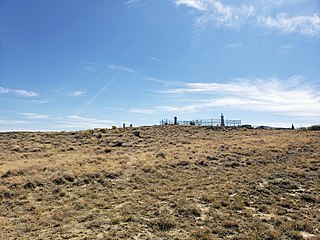
Carbon Cemetery is a cemetery in the coal-mining ghost town of Carbon, Wyoming. It was one of the first formal burial grounds in Wyoming, and is one of the few remaining vestiges of the town. Starting about 1868 the dead were brought to the town to be buried. By the late 1880s coal mining dropped off and the railroad moved elsewhere, and the town began to die. Victims of mine explosions were buried in the cemetery in 1903 and 1908. Its last resident died in 1912. A few burials took place after the town was abandoned.
Holy Guardian Angels Church and Cemetery Historic District is a nationally recognized historic district located in Roselle, Iowa, United States. Holy Guardian Angels is a former Catholic parish of the Diocese of Sioux City. The historic district made up of the former parish church and cemetery was listed on the National Register of Historic Places in 2019. It is significant for the architecture of the Gothic Revival church and the influence of the German-Catholic immigrants who settled the area.
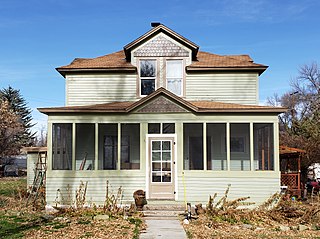
The Hester E. Suydam Boarding House, at 209 W. River St. in Fromberg, Montana, was built in 1907. It was listed on the National Register of Historic Places in 1993.

The Gebo Barn, in Carbon County, Montana near Fromberg, Montana, was built during 1907 to 1909. It was listed on the National Register of Historic Places in 2005.
Coalville, Montana, also known as Gebo, Montana, was a community by the Gebo Mine, in Carbon County, Montana near Fromberg, Montana.

Dawson Cemetery is a historic cemetery in Dawson, New Mexico. It was established in 1913. It has been listed on the National Register of Historic Places since April 9, 1992.















